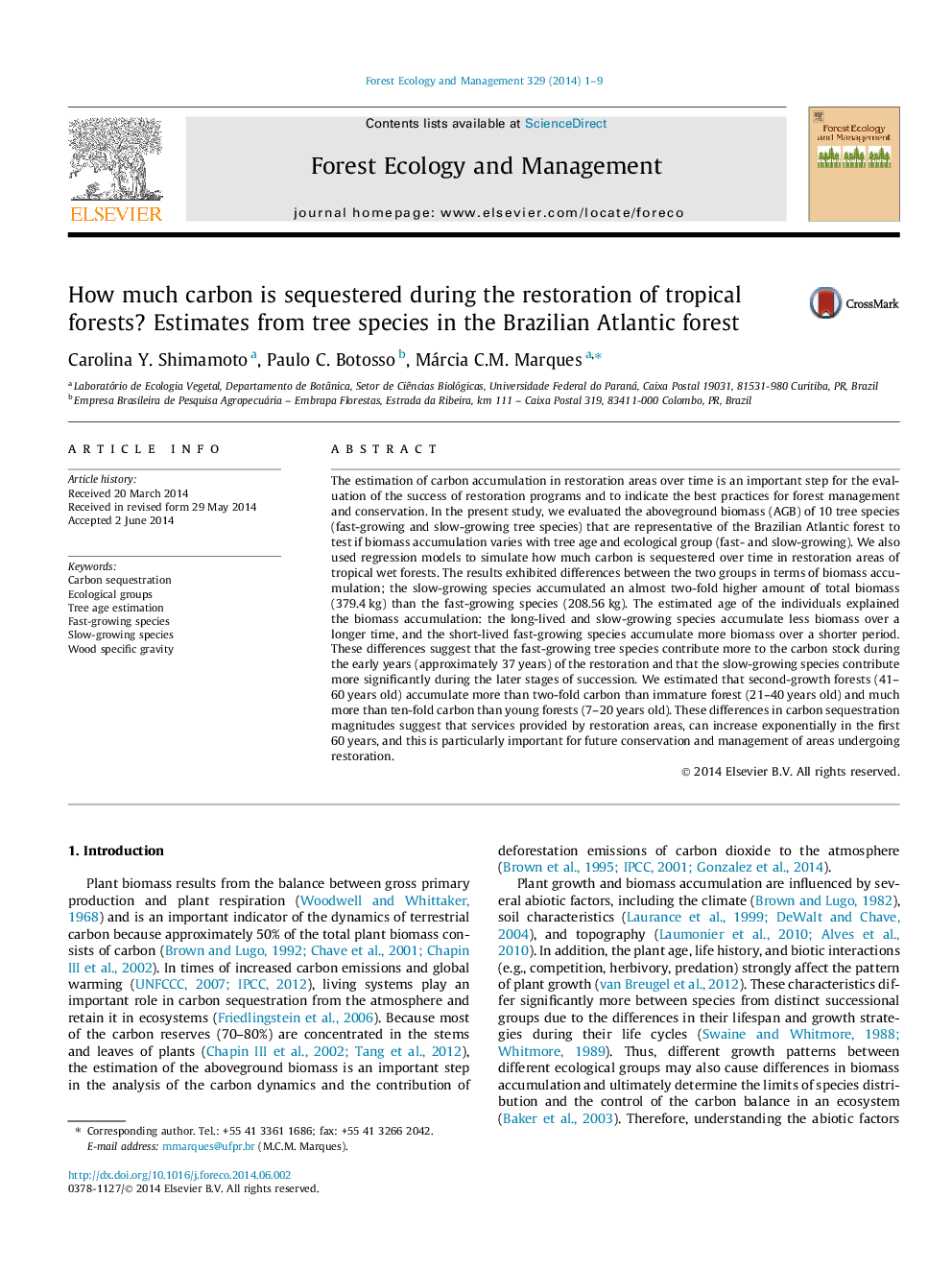| کد مقاله | کد نشریه | سال انتشار | مقاله انگلیسی | نسخه تمام متن |
|---|---|---|---|---|
| 6543400 | 159190 | 2014 | 9 صفحه PDF | دانلود رایگان |
عنوان انگلیسی مقاله ISI
How much carbon is sequestered during the restoration of tropical forests? Estimates from tree species in the Brazilian Atlantic forest
ترجمه فارسی عنوان
چقدر کربن در طی بازگرداندن جنگل های گرمسیری از بین رفته است؟ برآورد از گونه های درخت در جنگل های اقیانوس برزیل
دانلود مقاله + سفارش ترجمه
دانلود مقاله ISI انگلیسی
رایگان برای ایرانیان
کلمات کلیدی
تداخل کربن، گروه های اکولوژیک، برآورد سن درخت، گونه های پرورش سریع گونه های آهسته رشد، وزن مخصوص چوب
موضوعات مرتبط
علوم زیستی و بیوفناوری
علوم کشاورزی و بیولوژیک
بوم شناسی، تکامل، رفتار و سامانه شناسی
چکیده انگلیسی
The estimation of carbon accumulation in restoration areas over time is an important step for the evaluation of the success of restoration programs and to indicate the best practices for forest management and conservation. In the present study, we evaluated the aboveground biomass (AGB) of 10 tree species (fast-growing and slow-growing tree species) that are representative of the Brazilian Atlantic forest to test if biomass accumulation varies with tree age and ecological group (fast- and slow-growing). We also used regression models to simulate how much carbon is sequestered over time in restoration areas of tropical wet forests. The results exhibited differences between the two groups in terms of biomass accumulation; the slow-growing species accumulated an almost two-fold higher amount of total biomass (379.4Â kg) than the fast-growing species (208.56Â kg). The estimated age of the individuals explained the biomass accumulation: the long-lived and slow-growing species accumulate less biomass over a longer time, and the short-lived fast-growing species accumulate more biomass over a shorter period. These differences suggest that the fast-growing tree species contribute more to the carbon stock during the early years (approximately 37Â years) of the restoration and that the slow-growing species contribute more significantly during the later stages of succession. We estimated that second-growth forests (41-60Â years old) accumulate more than two-fold carbon than immature forest (21-40Â years old) and much more than ten-fold carbon than young forests (7-20Â years old). These differences in carbon sequestration magnitudes suggest that services provided by restoration areas, can increase exponentially in the first 60Â years, and this is particularly important for future conservation and management of areas undergoing restoration.
ناشر
Database: Elsevier - ScienceDirect (ساینس دایرکت)
Journal: Forest Ecology and Management - Volume 329, 1 October 2014, Pages 1-9
Journal: Forest Ecology and Management - Volume 329, 1 October 2014, Pages 1-9
نویسندگان
Carolina Y. Shimamoto, Paulo C. Botosso, Márcia C.M. Marques,
